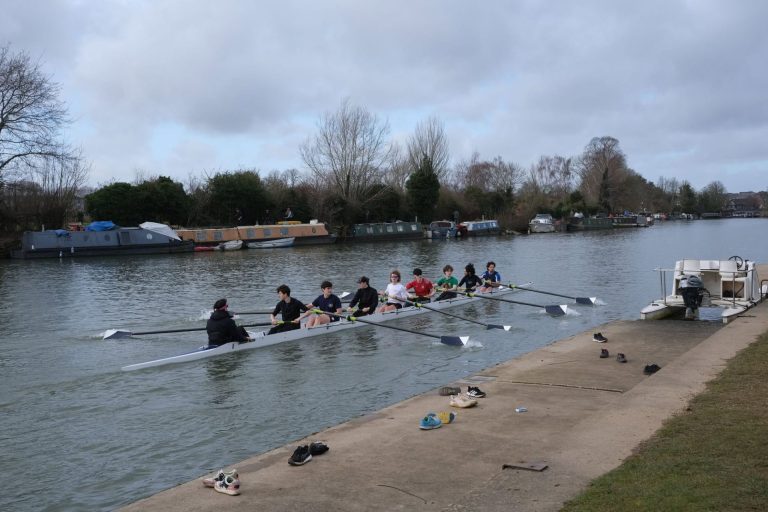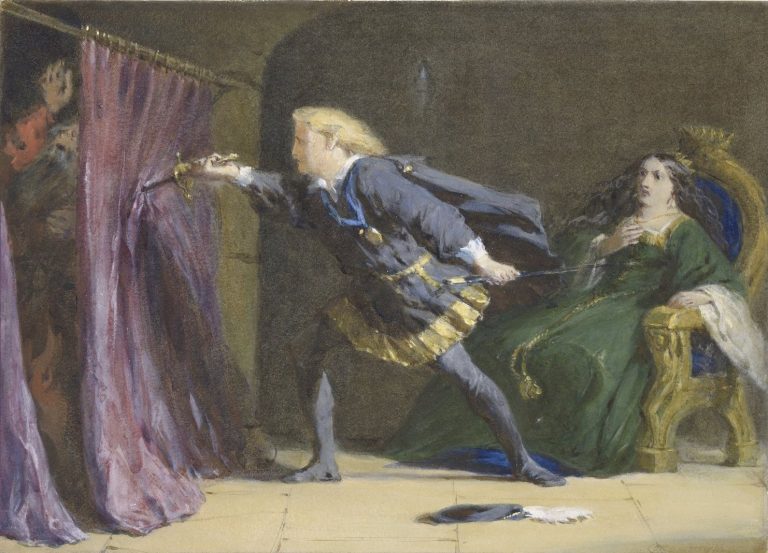‘Hamlet: “O’, that this too too solid flesh would melt, thaw…” [Throws grenade at helicopter. Explodes. Hamlet’s pulverised body is thrown backwards by the implosion.]’
Don’t quite remember this scene from the bard’s masterpiece? You won’t forget it after watching Pinny Grylls and Sam Crane’s spectacular docu-drama about the staging of a production of Hamlet inside the game of ‘Grand Theft Auto Online’ during COVID. On International Women’s Day this year, Hertford alumnus Pinny Grylls returned to her old college for a showing of the film, and to answer the many questions she knew the audience would inevitably have.
Welcome to the world of Los Santos – a city miraculously like its Californian homophone – where guns and random acts of violence are the norm, and no-one knows who anyone really is. It’s also a city of beauty, with aching sunsets and perfectly-rendered verdure.
In lockdown, all too many people with too much time on their hands found something like solace in video games. Open world games provide the opportunity to live a life of vicarious freedom: to see sights, travel, meet others, and, of course, blow things up. Equipping an avatar allows for the anonymity needed to forge a new identity, and escape the ennui of looking at the same four walls, day in, day out. The entire conception of Grand Theft Hamlet – beyond just its dialogue about staying sane during lockdown – brings back COVID claustrophobia, the need to find ways to keep occupied.
On the face of it, it’s unreal. For anyone who’s not been exposed to ‘Machinima’ (a somewhat hideous portmanteau of ‘machine’ and ‘cinema’), the idea of trying to create a cinematic work inside a video game may sound comic, bizarre, or even hopeless. Yet Pinny Grylls is clear that the artistic potential of video games is immense. She admits to not enjoying gaming, but the worlds that they offer are – in some cases quite literally – boundless. This artistic potential finds full and fabulous expression in Grand Theft Hamlet, which takes a play already obsessed with performance and facades, and goes above and beyond in exploring the verbs ‘to act’ and ‘to play’. It’s impossible to tell what’s scripted and what’s not – everything flows effortlessly and naturally: a testimony to Grylls’ skill in editing and shooting.
The simple conceit is that two friends, Sam Crane and Mark Oosterveen, inspired by stumbling upon a huge amphitheatre in-game, decide one day to stage a production of Hamlet inside GTA Online. With the help of Pinny Grylls, who acts as cinematographer, they go through the digital world of Los Santos trying to enlist willing recruits. Calling upon friends and strangers from the internet alike, they slowly begin to assemble a rag-tag bunch of performers, using the audio function to chat, and various emotes to enact their characters.
As a viewing experience, it’s remarkably funny. The surrealness of watching 90 minutes of in-game footage does wear off, and at times you even feel something like emotional connection to the pre-programmed movements of the various players, until you’re intentionally brought back to awareness of the absurdity of it all. The film effortlessly moves between languid conversations between Sam and Mark as they move through the world, plotting how to get more actors and solve difficult staging problems, and scenes from Shakespeare’s play.
One of the most comedic moments of the film comes early on, not long after Sam and Mark have found their amphitheatre, and formed a loose plan. They are, as all of ‘the cast’ is throughout the film, interrupted by some other players who greet them in the usual friendly way of GTA: with blows and bullets. Prompted into action, Mark and Sam proceed to voice-over the opening scene of the play (with the sentries discussing their night’s watch), with a hysterical contrast to the contents of the screen. Whilst chaotically firing machine guns at the insurgents, they report to Horatio no disturbance during their watch, and calmly say that it has been a peaceful evening (as the violence continues to unfold).
Other reenactments of the play are also impeccable: Hamlet’s sixth soliloquy (“Now might I do it”) sees the protagonist steadfastly training a gun on the kneeling Claudius; the Ghost’s first appearance to his son sees a huge zeppelin appear in the night’s sky, topped with a fluorescent ghost mask-wearing character, exactly as Horatio speaks “look, my Lord, it comes”.
As well as the dedicated cast, other gamers come and go. A shy man, whose ‘skin’ (the appearance) is that of a green dragon with a distinct rear, not wanting to play a character but clearly very attached to the show, appears in and out of narrative, acting as a loyal protector to the actors – he ensures that the final performance is safe by flying above in a huge military jet.
The non-playable characters (NPCs) also have an essential role. Their automated dialogue and preset sayings feature variously as hilarious, prescient, and poignant. In one of my favourite scenes of the film, whilst Hamlet recites the ‘What a piece of work is a man’ monologue, Pinny zooms in very close to the faces of some aged and bewildered NPCs. As we hear “How noble in reason, how infinite in faculty, In form and moving, how express and admirable”, the bedraggled NPCs look confusedly around, perfectly contradicting Hamlet’s words in seeming to be utterly devoid of reason and faculties.
But these words are not just an exaltation of human reason; it’s said in one of Hamlet’s darkest hours, and follow: “I have of late, (but wherefore I know not) lost all my mirth, forgone all custom of exercises; and indeed, it goes so heavily with my disposition; that this goodly frame the earth, seems to me a sterile promontory.” Indeed, whilst the film is oftentimes raucously funny, it is also a serious reflection of the difficulties that come with social isolation. Mark is at times very like the morose protagonist: we learn that he’s living alone, without friends or family, and the tediousness of being isolated in the same place is sure to make everything seem like a “a foul and pestilent congregation of vapours”.
Thus the ending, in which everything comes together, and the play really goes ahead, is a moment of exhilaration and joy (and incredible staging), but it’s also bittersweet. After it ends, the play may be over, but life goes on.










